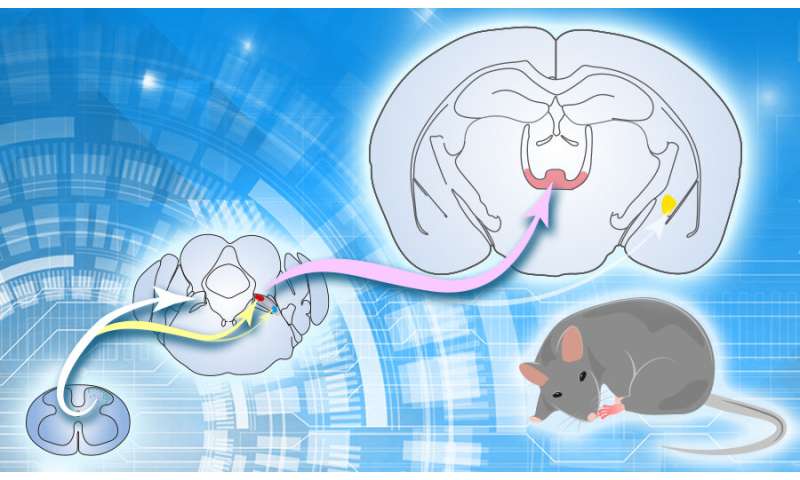Study reveals circuit mechanism underlying nociceptive information processing

A recent study published in Neuron reveals the long-range circuit underlying nociceptive information processing. This work was performed by the researchers from Dr. Sun Yangang’s Lab at the Institute of Neuroscience, Center for Excellence in Brain Science and Intelligence Technology of the Chinese Academy of Sciences.
Pain sensation is critical for organisms to sense the changing environment for potential danger, and is thus important for survival. But chronic pain remains a major challenge in medicine, affecting the quality of life for more than 15% of the population. Mechanistic study of nociceptive information processing could identify new therapeutic targets for the treatment of chronic pain. Progress has been made in understanding the cellular and molecular mechanism for nociceptive information processing at the spinal level. However, how nociceptive signals are transmitted from the spinal cord to the brain is not fully understood.
Previous studies showed that spinal projection neurons send projections to multiple brain areas, including the thalamus, the periaqueductal gray, and the parabrachial nucleus (PBN). Using viral tracing approaches, the researchers in this study demonstrated that the spinal cord connects with the PBN in a bilateral manner, which is different from spinal projection targeting at other brain areas with a dominant contralateral pattern.
By further examining the functional role of the ipsi- and contralateral spino-parabrachial pathways in processing nociceptive information, they found that inhibition of the ipsilateral, but not the contralateral, spinoparabrachial pathway suppressed formalin-evoked pain-related licking behaviors in test rodents. Consistently, activation of the ipsilateral rather than the ipsilateral spinoparabrachial evoked pain-related licking behaviors.
Additionally, they identified Tacr1-expressing neurons as the major neuronal subtype in PBN that receives direct spinal input. These Tacr1-expressing neurons were selectively activated by noxious mechanical and thermal stimulation, and were critical for processing nociceptive information.
It has been long thought that PBN neurons that receive projections from the spinal cord directly relay pain signals from the spinal cord to the central nucleus of amygdala. The researchers showed that PBN neurons receiving spinal input form functional monosynaptic excitatory connections with neurons in the intralaminar thalamic nuclei (ILN) but not the amygdala.
Source: Read Full Article


